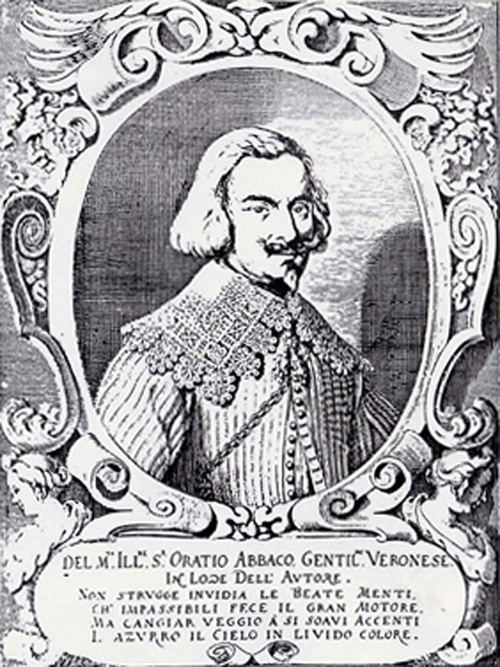
Notes on the Works of Giovani Paolo Foscarini
By J.D. Gregory
L’academico Calignosos Detto Il Furioso
Along With a Speculative Fantasia on His Life
Share this:
[feather_share]
INTRODUCTION
Foscarini was one of the more important catalysts to the development of the guitar in the baroque period. However, his work is not well known except by baroque guitar specialists. This article is addressed to the general guitar player in the hope of providing an overview of the contribution of this interesting but obscure character to the development of the instrument and its notation. A limited amount of baroque music is available to the non specialist player and this inevitably consists of a few old favourites along with (inexplicably) transcriptions of keyboard pieces while the enormous corpus of baroque guitar music including that of Foscarini is unplayed. Foscarini awaits his 20th century champion.
BIOGRAPHY
Biographical facts are sparse, even the identity of L’ Academico Caliginoso detto il Furioso is not revealed in his published works. In Gaspar Sanz’ Instruccione de Musica sobre la Guitarra Spagnola, published in 1694, II Furioso was identified as Foscarini.
“Such facts as are available are as follows:
Giovani Paolo Foscarini was active as a composer and player of the baroque guitar between 1621 and 1649. He served at the court of Archduke Albert In Brussels, and also at the courts of Charles de Lorraine and the Duke de Guise. It is known that he worked for Delionne in Paris in 1647 and for Detro Roncalli (possible a relative of Ludovico Roncalli) in Venice.
The flamboyant name, the Smokey Academic also the Tempestuous one, may derive from his membership of a secret society, II Calignosi. He published books for 5 course baroque guitar as follows:
Dell Armonia del Mondo Lettione Due. Paris 1647 This was a philosophical discourse on music.
II Prima Secundo E Terzo Libra della Chitarra Spagnola.
This remarkable work is a guitar method, a dissertation on the Alfabetto method of notation and a large compilation of guitar compositions in Italian tablature. A later edition of this book comprises of two sinfonias for guitar and basso continuo together with notes on interpretation.
MAJOR WORKS FOR THE GUITAR
II Primo Secundo E Terzo Libro della Chitarra Spagnola contains much of interest both visually and musically.
On the first page surrounded by Cherubs, pictures of the fretted instruments and baroque grotesque caprices worthy of the great Pirenesi is a summary of the contents. The music comprises new compositions, Passacalli, Spanish variations, Ciacone, Follie, Zarabande, Arie divers, Toccate musicali, Balletti, Correnti, Volte, Gagliardi, Allemande and with some music picked in the style of a lute.
Following an imposing portrait of the author the main substance of the books begins. Foscarini begins with a description of his system of notation which is highly specific in a way that staff notation is not, specifying string number, fret, up or down strumming action and duration by note value.
Next follows a short section on tuning which shows the instrument to be similar in relative pitch to the top five strings of the modern guitar. Checking of tuning by octaves is recommended.
Picking and strumming techniques along with the use if finger and thumb are discussed in some detail.
Next follows a key which explains the Alfabetto system of notation as used by Foscarini. This basically is a fingerboard of shorthand which is not too different from the old C, F and G7. Letters of the alphabet are used to denote various chord shapes. Superscript numbers are used to represent moving a chord-shape up the fingerboard. The numbers represent the fret number. The open string is 0, first fret is I, etc. Dots are used to represent the fingers used. The system is not too difficult to absorb with a bit of practice.
From here we go straight into the large body of compositions. Initially these are strummed chords. Later works become more complex as in the Toccate and Corrente in Italian tablature. Later works are combinations of tablature and alfabetto often fancifully decorated with botanical specimens. There is even a duet for two guitars, the Corrente concertata to Signor Guilio Francesco Branceleone.
This article is based on information from primary sources and the New Grove. The definitive article on Foscarini appears in the Journal of the Lute Society of America (7) 1974 pp 4-18. The flavour of Foscarini may be gained from Alexander Bellow’s transcriptions in his Renaissance and Baroque series published by Belwin Mills.
Recordings are like hens teeth.
